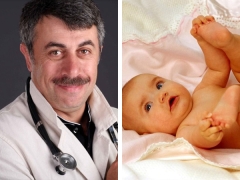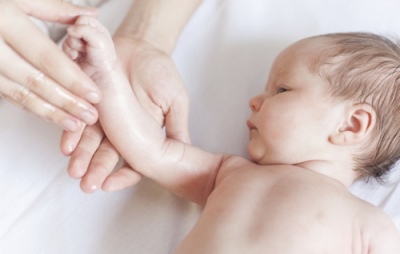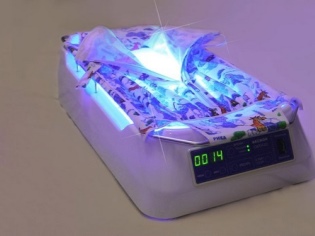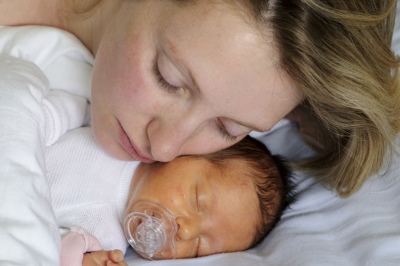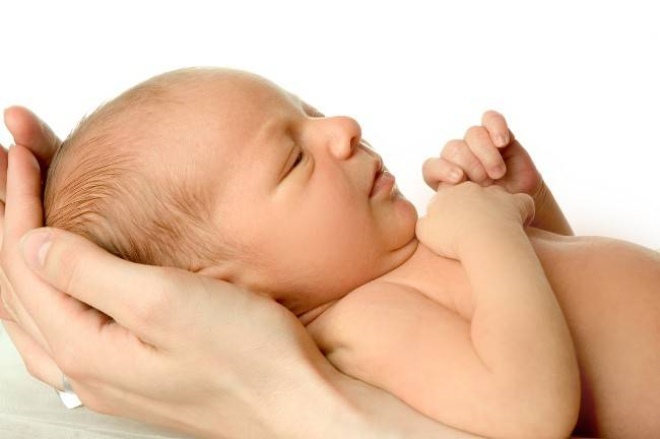Dr. Komarovsky about jaundice in newborns
The beautiful and long-awaited baby, who was born, suddenly turned yellow. On the third day after childbirth, just to the discharge, which the whole family waited for, the crumb acquired an unusual orange blossom, once and for all crossing out mom's dreams of a beautiful photo shoot with a newborn. Joyful thoughts were replaced by anxiety - what kind of jaundice is this and how is it dangerous? A well-known pediatrician, TV host and author of books and articles on children's health, respected by millions of mothers Yevgeny Komarovsky, answers these questions.
What happened?
Jaundice in newborns is quite common, it occurs in 50-60% of full-term and 80% of premature babies. To treat it as a disease is not worth it. The skin of the child turn yellow for quite physiological reasons. Fetal hemoglobin in the baby’s blood (which was natural for him during pregnancy) changes to a normal human hemoglobin A. Scarce adapts to the environment. Its enzyme system is immature, as is the liver. It is this organ that is responsible for the elimination of bilirubin, which is formed in all people during the breakdown of red blood cells. These blood cells are constantly updated, hence the need for the "recycling" of aging cells.
In the crumbs in the postpartum period, when replacing hemoglobin with normal, red blood cells that are aging, also break down, but a weakly functioning liver cannot yet remove bilirubin. This bile pigment, which remains in the body, causes the skin to turn yellow. Such a metamorphosis usually occurs with a newborn on the third day after birth.
The enzyme system is improving rather quickly. As the liver, receiving the necessary enzymes, begins to work in full force, the bilirubin begins to leave the body, the skin brightens, first acquiring a peach shade, and then returning to normal color. Usually, this process is fully completed by the 7-10 day of life, so after discharge in 4-5 days, less often - in a week, the jaundice should completely pass. Protracted neonatal jaundice can be observed in premature babies, but doctors try to carry out their treatment and observation in the hospital.
Another type of non-dangerous jaundice - breastfeeding jaundice. According to Komarovsky, there are special substances in breast milk that slow down the binding of bilirubin in the liver. This situation is normal, does not require treatment, and even more so the abolition of breastfeeding and the transfer of the baby to food adapted mixtures.
How to treat?
Since the process is natural, Yevgeny Komarovsky advises mothers to calm down and not to bother with questions about the treatment of neonatal jaundice. Modern medicine does not use special medications for these purposes. It is believed that the most effective way to somewhat speed up the process of normalizing the skin color of the child - light therapy. To do this, use the "blue" lamp, which illuminate the skin of the child. As a result, the bilirubin pigment under the influence of rays disintegrates into substances that the body of the newborn is quite able to excrete with urine and feces.
Komarovsky advises to use at home the usual "white" lamps, if there are no LED, because any bright light neutralizes the toxicity of bilirubin.
Another effective cure for jaundice is created by nature itself - mother's breast milk. It contains natural substances to enhance the immune protection of the child. Therefore, the sooner the baby is applied to the breast, the more often it will be fed with breast milk, the faster and easier his body will cope with the physiological jaundice. Feeding such children is a special story. As a rule, the crumbs with elevated bilirubin are characterized by increased drowsiness and may miss feeding. It is important to ensure that the baby eats on time, wake him up if necessary, but in no case do not overfeed.
The therapeutic effect will have walks with such a baby. It needs to be taken out more often to the street so that the child has contact with indirect sunlight. If the weather permits, and the season, the child with the jaundice should totally spend on the street most of the day.
Pathological situations
An abnormal condition is one in which a child, after birth, begins a massive disintegration of red blood cells, not only obsolete and in need of replacement, but also completely healthy. The level of bilirubin in this case is very high, and we are no longer talking about a functional jaundice. Doctors talk about hemolytic disease of the newborn (HDN). This pathology can develop in children whose blood type, Rh factor are different from the maternal. If an immunological conflict arises, mother’s immunity produces specific antibodies against fetal blood cells.
Such jaundice develops in the first hours after the birth of the baby. The result is severe anemia the newborn suffers from its liver, central nervous system, brain. Doctors are closely monitoring the level of bilirubin. Upon reaching certain critical levels of this pigment in the blood, a replacement transfusion is prescribed. Sometimes these procedures require several to reduce the toxic effects of bilirubin on the body and all its systems. In case of rapid and severe hemolytic disease, death may occur.
Another abnormal jaundice inherent in children is associated with atresia of the biliary tract. This is a congenital pathology in which the given paths are not formed or formed incorrectly due to some genetic error. Such a disease is very rare, it is subject to, according to official medical statistics, one of the 15 thousand children born to the world. This condition is eliminated surgically, the operation is very complex, high-tech, but it gives the child a chance for a further normal life.
There are other reasons for the appearance of jaundice abnormal for a newborn:
- An overdose of vitamin K. The drug "Vikasol" (a synthetic analogue of vitamin K) is used during childbirth to prevent or eliminate severe bleeding in a woman. In case of an error in dosing or an urgent need for a large amount of the drug for a woman, an overdose in a baby may occur.
- Diabetic fetopathy. A condition in which the baby's liver and its enzyme system are not sufficiently developed due to the fact that the fetus suffered during pregnancy against the background of mom's diabetes.
- Genetic (hereditary) liver malformations. These are some types of genetic syndromes in which structural genetic errors have occurred in the fetus at the level of organ insertion.
- Intrauterine infections. Some infectious diseases that mom suffered during pregnancy can cause abnormalities in the development of the fetal liver.
Treatment of pathological jaundice
Pathological jaundice does not go away in 7-8 days, usually it has a protracted nature. Each type of jaundice requires a mandatory additional examination to find the true cause, after which adequate treatment is prescribed - conservative or surgical.
Quite often, children in the treatment of pathological types of jaundice prescribe such a serious drug as "Phenobarbital." Yevgeny Komarovsky says that there is nothing unusual in this; this drug really has the ability to activate enzymes that accelerate the binding of bilirubin in the liver. However, nowhere in the world is this medicine used to treat young children, since the side effect that Phenobarbital has on the child’s nervous system is so devastating that its other properties lose their relevance. Modern medicine has established for certain that the use of "Phenobarbital" at an early age always leads to a decrease in intelligence, learning ability at an older age.
Tips of Dr. Komarovsky
With physiological (normal) jaundice in a newborn, it is imperative to drink water. Very useful for crumbs glucose.
The presence of physiological jaundice of the newborn is not a contraindication for vaccination against hepatitis. Refusing to vaccinate just because the baby is yellow is not worth it, says Yevgeny Komarovsky. With jaundice, the pathological risk of getting hepatitis C increases significantly, and therefore Komarovsky considers the vaccine to be even more necessary and useful.
To decide whether a child has jaundice - normal or pathological - not the parents, but the doctors should. Komarovsky calls in all cases where the skin of the baby has changed color to yellow of different intensity, be sure to visit the doctor.
For more information about the newborn's jaundice you can see in the next video.
